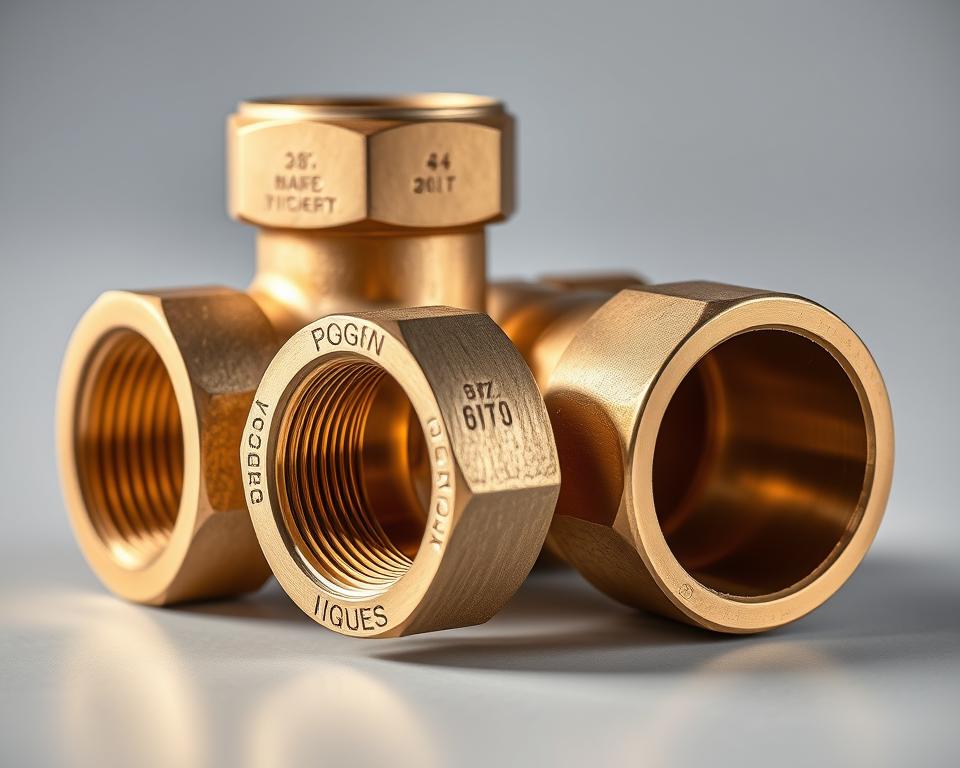Your Comprehensive Resource for FTTH cable Production Line
This is your comprehensive resource for understanding the FTTH cable production line. Within this comprehensive article, we will examine fiber optic cables and their indispensable role in allowing high-speed data transmission. With the ever-increasing need for quicker and more dependable internet connectivity, grasping the complexities of FTTH cable production is now vital. This guide will furnish you with valuable insights into the production of Fiber cable sheathing line, starting with the basics of cable infrastructure and moving through the step-by-step manufacturing process.
This guide caters to both those who are new to the industry and those who wish to improve their knowledge. This guide will delve into the essential components of FTTH cable systems, the function of optical fibers in FTTH technology, and how raw materials are turned into top-quality fiber optic cables. Furthermore, our discussion will include design considerations, stranding techniques, buffering and jacketing processes, and how to efficiently operate the FTTH cable production line.
We will also cover the advanced technologies that are revolutionizing FTTH cable manufacturing, as well as the crucial role of testing and quality assurance in ensuring the reliability and durability of fiber optic cables. Also, we will examine the last phases of packaging and distribution, ensuring the FTTH cable production line functions smoothly from the initial stage to the final one.
Key Takeaways:
- High-speed data transmission relies heavily on the FTTH cable production line.
- Having a grasp of the basics of FTTH cable infrastructure and its key components is vital.
- The production of FTTH cable, from silica to fiber, includes fiber drawing, coating application, and testing as sequential steps.
- Performance can be optimized by designing configurations and layouts that satisfy particular network requirements.
- Stranding techniques and central strength members add support and protection to the fiber.
Understanding FTTH cable Production Basics
To truly understand the FTTH cable production process, a clear understanding of the cable infrastructure, main components, and the part played by optical fibers in FTTH technology is vital.
Fundamentals of FTTH cable Infrastructure
This network of cables, connectors, and distribution points, which enables data transmission in fiber-to-the-home (FTTH) systems, is what we call the FTTH cable infrastructure. The backbone of high-speed internet connectivity is formed by this infrastructure, which allows for seamless data transfer between the provider’s network and the end user’s location.

Key Components of FTTH cable Systems
Several key components collaborate in FTTH cable systems to guarantee the smooth and efficient transmission of data. These components include:
- In the form of light, data signals are carried by these fiber optic cables. Their design focuses on high bandwidth and low signal loss, which guarantees fast and reliable data transmission.
- Crucially, connectors join fiber optic cables to other cables or devices, and they also make it easy to connect and disconnect cables when needed. They provide a secure and reliable connection, minimizing signal loss.
- Multiple end users receive divided and distributed fiber optic signals through the use of distribution points. They play a role in making sure every user gets the right amount of bandwidth while keeping the overall network performance intact.
Why Optical Fibers are Key to FTTH Technology
The most important part of FTTH technology is optical fibers. Made of thin strands of glass or plastic, they are designed to efficiently transmit data signals in the form of light pulses. Their high bandwidth capacity, low signal loss, and resistance to electromagnetic interference make optical fibers ideal for high-speed data transmission.
The light signals are carried by the core of these fibers, which is surrounded by a cladding layer that reflects the light back into the core, thereby preventing signal loss. Because of this design, optical fibers can transmit data across great distances without any loss in signal quality or speed.
The Journey from Silica to Fiber: A Step-by-Step Guide
How Fiber Drawing Creates the Core of the cable
Fiber drawing is the initial step in the FTTH cable production process, and it’s where the cable’s core is made. Pulling and stretching a glass preform made of silica is how this process creates a long, thin fiber. Careful control of the fiber’s diameter during fiber drawing is essential for optimal performance. How well and accurately the cable transmits data depends heavily on the quality and composition of its core.
How Coating Application Ensures the cable’s Durability
Coating application is the step that follows fiber drawing. In this stage, a protective layer, known as a coating, is applied to the fiber. The coating has several roles, including acting as a buffer against external factors like moisture, which improves the fiber’s long-term durability and reliability. Careful selection of the coating material ensures it has the right mechanical properties, which keeps the fiber intact and protected for its entire lifespan.
Fiber Testing: Quality at Every Stage
Fiber testing is carried out at various points during the FTTH cable production process to confirm the fiber’s quality and performance. The fiber’s physical parameters, including diameter, attenuation, and tensile strength, are measured during these tests, and the coating is also inspected for uniformity and adhesion. Ensuring that the fiber meets the required standards and specifications is crucial, and these tests help guarantee the overall quality and performance of the final FTTH cables.
| Production Stage | Parameters Tested |
|---|---|
| Fiber Drawing | Diameter, Attenuation, Tensile Strength |
| Coating Application | Coating Thickness, Uniformity, Adhesion |
FTTH cable Production: Testing Parameters at Different Stages (Table)
The table above summarizes the testing parameters measured at different stages of the FTTH cable production process. Rigorous testing allows manufacturers to guarantee that each fiber used in the cables meets the required quality standards, ultimately contributing to the high-performance and reliability of FTTH cable systems.
How to Design FTTH cable Configurations
For fiber-to-the-home (FTTH) cable production, designing cable configurations is essential for meeting network requirements and getting the best possible performance. Factors like network capacity, how easily it can be expanded, and the desired speed of data transmission are all part of cable design. Customizing cable configurations to fit specific needs allows companies to deploy their network infrastructure efficiently and get the most out of it.
When it comes to FTTH cables, there are many different configurations and layouts available, each with its own benefits and things to think about:
- The main distribution point is connected to each subscriber in a sequential manner in the Daisy Chain Configuration. This cost-effective solution is ideal for regions with a low number of subscribers.
- In the star configuration, the central office or hub is directly connected to each subscriber. This design provides flexibility and ease of maintenance, making it ideal for densely populated areas.
- Subscribers are connected in a circle in the ring configuration. Redundancy and the ability to keep working even if there’s a fault are features of this configuration, ensuring service continues if the network fails.
- The main distribution point connects to secondary distribution points, and from there, individual subscribers are connected in a tree configuration. It enables efficient network expansion and is often used in areas with a high concentration of subscribers.
- The mesh configuration ensures high reliability and redundancy by providing multiple connections between distribution points. Applications where uninterrupted service is absolutely necessary often use this configuration.
Thinking about the network’s needs and its anticipated future growth is essential when designing FTTH cable configurations. Factors such as how many subscribers there are, the geographical area, and what services are required will determine which configuration is best, as each has its own advantages and limitations.
By carefully evaluating these factors and collaborating with industry experts, companies can develop customized FTTH cable configurations that meet their specific network requirements and deliver optimal performance.
Equipment and Techniques Used in Stranding
The production of strong and durable FTTH cables relies heavily on the stranding techniques and equipment employed. There are different stranding patterns that can be used, and each one has its own benefits and is used for specific applications. Efficient and high-quality cable production requires the selection of the right stranding machinery. Additionally, central strength members provide additional support and protection for the fiber, contributing to the overall reliability of the FTTH cables.
A Look at Different Stranding Patterns
One of the key aspects of FTTH cable production is the selection of the appropriate stranding pattern. Depending on what characteristics are desired in the cable, different stranding patterns are used, such as reverse concentric, SZ stranding, and helical stranding. The unique features of each pattern can improve the cable’s performance in areas like flexibility, strength, and how well it holds up against external factors. Careful selection of stranding patterns ensures that the specific requirements of the application are met, which leads to optimal performance and a long lifespan for the FTTH cables.
Selecting Appropriate Stranding Machinery
The FTTH cable production line relies heavily on stranding machinery. The stranding pattern can be precisely formed thanks to this machinery, which also keeps the fibers at the necessary tension and in the correct alignment. The right Fiber coloring machine machinery to choose will depend on things like the cable’s diameter, the speed of production, and how automated you want the process to be. Because advanced stranding machines are more efficient and flexible, manufacturers can produce a large number of cables and also offer customization.
The Function of Central Strength Members
The mechanical properties of FTTH cables are enhanced through the use of central strength members. The delicate fiber inside the cable is protected, and the cable gains stability and improved tensile strength from them. Typically made of materials like aramid or fiberglass, the central strength members act as a backbone, reinforcing the cable structure and offering resistance against external forces. FTTH cables are able to withstand the stresses of installation and maintain the quality of signal transmission thanks to them, which makes them suitable for different deployment scenarios.
The Role of Buffering and Jacketing in Fiber Protection
During the production of FTTH cables, the buffering and jacketing processes are crucial for safeguarding the delicate fiber inside. These processes guarantee that the fiber is protected from a wide range of potential threats, including moisture, rubbing, and other external elements that could endanger its performance and how long it lasts.
Why Buffering is Important in cable Production
The process of buffering includes applying a protective layer around the fiber, and this layer acts as a barrier against environmental elements. This layer prevents water penetration, which can cause signal loss or even breakage of the fiber. Buffering also makes the cable more resistant to rubbing, which lowers the chance of damage when it’s being installed or maintained.
The buffering materials used must exhibit excellent adhesion to the fiber and possess a low coefficient of friction to minimize stress on the fiber. Choosing the right buffering material depends on things like what kind of environment the cable will be in and how much protection is needed.
The Importance of Material Selection for Jacketing
Putting an outer layer on to give extra protection to the fiber and the buffering materials is what jacketing involves. Careful selection of the jacketing material ensures strong protection against mechanical stress, impact, UV radiation, and other potential hazards.
When selecting jacketing materials, you need to think about things like flexibility, how well it resists fire, and if it’s compatible with the environment. Some of the materials that are commonly used for jacketing include polyethylene (PE), polyvinyl chloride (PVC), and low-smoke zero-halogen (LSZH) compounds. The specific application and what the industry standards are will determine which material is chosen, as each one has its own pros and cons.
How Latest Jacketing Technologies are Applied
Protecting FTTH cables has been completely changed by the latest improvements in jacketing technologies. These latest technologies provide better strength, more flexibility, and enhanced resistance to environmental factors, leading to greater durability and reliability.
Each fiber in tight-buffered cables, an innovative jacketing technology, is individually buffered with a thin layer of plastic, offering excellent protection and flexibility. Another technology is micro-ducts, which use rugged tubing to house multiple fibers, offering high-density and versatility in cable installation.
Specialized jacketing technologies have also been developed to meet the unique requirements of various industries. For example, cables that are used outside in tough conditions might have armored jackets to give them better protection from rodents, moisture, and very hot or cold temperatures.
FTTH cables can be tailored to meet the needs of different applications by using the latest jacketing technologies, which guarantees the best performance, a long lifespan, and reliability.
Understanding Operations in the FTTH cable Production Line
For a smooth and streamlined manufacturing process in the FTTH cable production line, efficient operations are essential. Each step in the production line plays a vital role in producing high-quality fiber optic cables that enable high-speed internet connectivity. The best efficiency is achieved through the use of various machinery and equipment.
The manufacturing process begins with the preparation of raw materials, including the silica used for fiber drawing. Following the preparation of raw materials, the fiber drawing process begins, and the cable’s core is carefully crafted to meet the desired specifications. The next step is coating application, which provides durability and protection for the fiber.
Ensuring the cables meet the highest standards is the top priority, so rigorous fiber testing is performed at every stage of the production line. Factors such as attenuation, bandwidth, and signal loss are all tested as part of this process.
Efficiency is a key factor in the operations of the FTTH cable production line. By optimizing the use of machinery and equipment, manufacturers can minimize production time and costs while maximizing output. Also, when the processes are efficient, the cables are of better quality overall.
It can be complex to manufacture these cables, as the process involves many different stages and components. Manufacturers can make their FTTH cable production line work better and more efficiently by using efficient operations and always looking for ways to enhance things.
The table below provides a summary of the key machinery involved in the FTTH cable production line and their respective roles in the manufacturing process, giving you a comprehensive understanding of the operations:
| Machine | Role |
|---|---|
| Fiber Drawing Machine | Produces the fiber optic cable core by pulling and stretching the silica material. |
| Coating Machine | Applies a protective coating to the fiber optic cable, ensuring durability and resistance to external factors. |
| Fiber Testing Equipment | Conducts various tests on the fiber optic cable to ensure quality and performance. |
| Spooling Machine | Winds the finished fiber optic cable onto spools for packaging and distribution. |
| Jacketing Machine | Applies an outer jacket to the fiber optic cable, providing additional protection and enhancing its handling. |
By using advanced machinery and technologies, manufacturers can make their production line operations more efficient, enhance their effectiveness, and deliver high-quality FTTH cables that satisfy the growing need for high-speed internet connectivity.
The Role of Advanced Technologies in FTTH cable Manufacturing
For the FTTH (Fiber to the Home) cable manufacturing field, which is always evolving, advanced technologies are key to enhancing efficiency and quality. With the increasing demand for high-speed data transmission, automation, AI integration, and fiber coloring machines have revolutionized the production process, driving innovation and delivering superior products.
Using Automation to Produce Fiber Optic cables
The way fiber optic cables are made has been significantly changed by automation. With advanced machinery and robotics, the manufacturing process can be controlled with great precision, ensuring consistent quality and minimizing errors. This automation allows for higher productivity rates, faster production times, and improved accuracy, ultimately leading to cost savings and enhanced customer satisfaction.
AI in Quality Control for cable Manufacturing
By integrating artificial intelligence (AI) into the quality control process, FTTH cable manufacturers can achieve unprecedented levels of accuracy and reliability. As production data is generated, AI algorithms can analyze it in real-time, identifying any changes or irregularities that could affect the quality of the cables. This proactive approach to quality control helps in minimizing errors, optimizing production efficiency, and ensuring that only the highest quality FTTH cables reach the market.
What Fiber Coloring Machines Can Do
FTTH cable manufacturing has been completely changed by the introduction of fiber coloring machines, which offer better ways to customize the cables. Optical fiber strands can be color-coded by fiber coloring machines, which makes it easy to identify them and manage the cables efficiently when installing or maintaining them. This technology gets rid of the need to color-code by hand, which reduces the possibility of errors and makes the whole process of deploying cables more efficient.
The Role of Testing and Quality Assurance in Fiber Optics
In the world of fiber optics, ensuring the highest quality is of utmost importance. This is achieved by using thorough testing and quality assurance methods throughout the entire production process. Making sure fiber optic cables are reliable and consistent depends heavily on standardized testing protocols.
The Importance of Standardized Testing Protocols
Standardized testing protocols are established to ensure that every fiber optic cable meets the required quality standards. At each stage of the production process, these protocols specify the testing procedures and criteria that must be followed. By following these protocols, manufacturers can spot and deal with any potential problems, guaranteeing that only the best quality cables are sent to customers.
Using OTDR for Quality Control in Fiber Optics
Performing quality checks on fiber optic cables relies heavily on the use of Optical Time-Domain Reflectometer (OTDR). OTDR is a testing instrument that sends light pulses to measure the amount of signal loss and reflection along an optical fiber. Looking at the OTDR traces allows technicians to find issues such as when the fiber is bent, signal is lost, or connectors are damaged. They can then find the precise location of any faults and take the necessary steps to fix them, ensuring the cable’s overall quality and performance.
Maintaining Rigorous Quality Assurance Standards
The consistent and reliable performance of fiber optic cables is ensured by maintaining quality assurance standards throughout the entire production process. Various aspects are covered by these standards, including the selection of materials, the manufacturing processes used, and the testing of the final product. Following these strict standards allows manufacturers to ensure that their products meet the highest quality and performance levels demanded by the industry.
Final Stages of FTTH cable Production: Packaging and Distribution
Packaging and distribution, the final steps in compact fiber unit production, are what this section is about. Once the cables have been through all the manufacturing steps, it’s very important to make sure they are packaged correctly and efficiently so they can be easily deployed and installed. Also, using protective packaging is very important for keeping the delicate fiber optic cables safe while they are being transported and stored. It’s essential to have efficient logistics and supply chain management to ensure that FTTH products are delivered to customers in a timely way and effectively meet their connectivity needs.
The Importance of Efficient cable Spooling
Using efficient techniques to spool cables is vital for making the installation of FTTH cables smooth and convenient. cable spools provide a practical and organized way to store and transport the cables, reducing the risk of tangling or damage. Using optimized cable spooling techniques allows cable installers to save both time and effort during the deployment process. The overall look of the installation is also enhanced by properly spooled cables, which ensures a neat and professional appearance.
Packaging Solutions for Safeguarding Fiber Optic cables
It’s very important to use effective protective packaging solutions to safeguard the delicate fiber optic cables during transportation and storage. These packaging solutions should cushion the cables, absorb shocks, and protect them from things outside like moisture, dust, and being hit. By utilizing high-quality packaging materials and techniques, manufacturers can ensure that the fiber optic cables arrive at their destination in optimal condition, ready for installation. It not only protects the cables but also makes customers more satisfied by reducing the risk of damage or the cables not performing well.
The Importance of Logistics and Supply Chain Management in FTTH
The successful delivery of FTTH products to customers depends on efficient logistics and supply chain management. To ensure timely and reliable delivery, this requires careful planning of the transportation, storage, and distribution of the cables. With effective supply chain management, delays are minimized, the flow of products is optimized, costs are reduced, and customer service is enhanced.
Conclusion
To conclude, this ultimate guide to the FTTH cable production line has given a complete overview of how fiber optic cables for high-speed internet connectivity are manufactured. The significance of the FTTH cable production line in enabling data transmission that is both fast and reliable has been highlighted throughout this article.
The ability to have seamless communication, streaming, and online activities through high-speed internet connectivity depends on the critical role played by fiber optic cables. The durability and quality of these cables are guaranteed by the step-by-step process of FTTH cable production, which goes from fiber drawing to buffering and jacketing.
Efficiency and accuracy in the manufacturing process have been increased thanks to advanced technologies such as automation and AI integration, which have revolutionized it. In addition, standardized testing protocols and rigorous quality assurance standards guarantee the reliability and performance of fiber optics.
Packaging and distribution are the final steps in FTTH cable production, ensuring that these essential cables are efficiently deployed and protected during transportation. Overall, the expertise and precision involved in the FTTH cable production line are essential in meeting the increasing demand for high-speed internet connectivity around the world.


